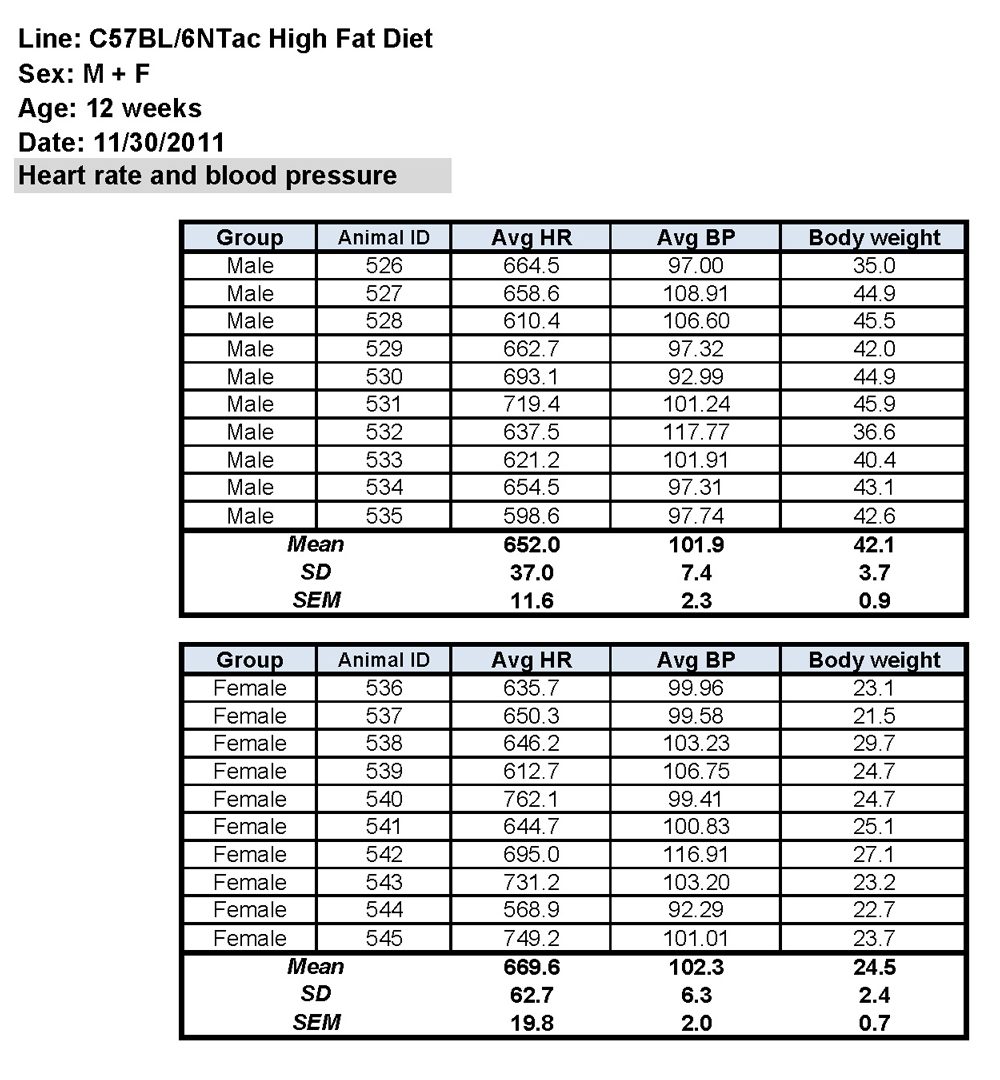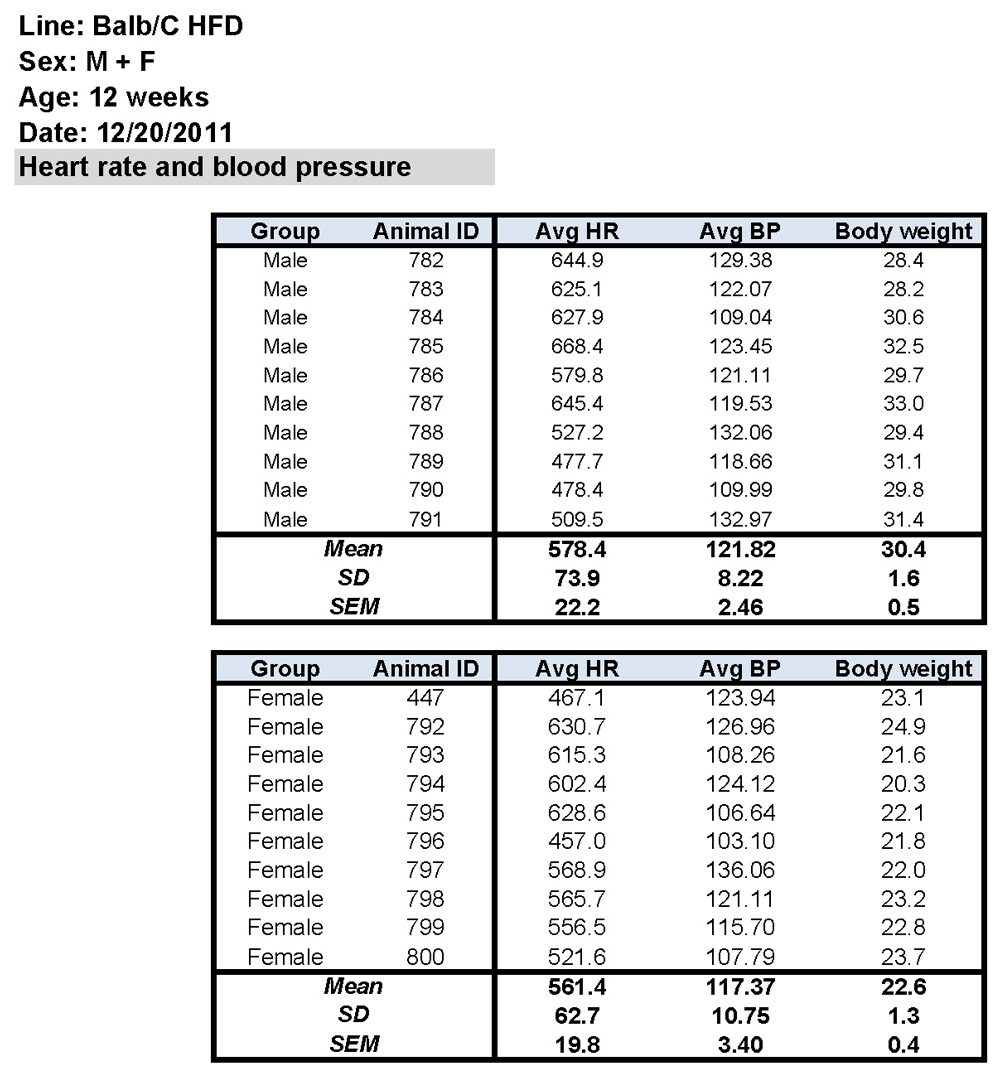- Home
- Resources
- Phenotypic Data
- Blood Pressure and Heart Rate
Blood Pressure and Heart Rate
Rationale:
Significantly increased or decreased blood pressure or heart rate in genetically modified or pharmacologically treated mice can identify potential cardiovascular genetic targets or compound indications. Systolic blood pressure, heart rate, and body weight are measured in mice consuming a regular chow diet. This assay can also be performed before and after a dietary challenge. In addition, both high-salt and high-fat dietary challenges have been utilized at Xenogen Biosciences in conjunction with measurements of blood pressure and heart rate.
Method:
The arterial systolic blood pressure (SBP) and heart rate (HR) were measured using a computerized non-invasive photoelectric tail-cuff system (BP-2000, Visitech Systems, Apex, NC). The mice were put on the specimen platform under the cover; their tails passed through a tail-cuff and a tail slot (with photoelectric cell) for the detection of the SBP & HR. The measurement process involved preliminary and data acquisition cycles. Preliminary cycles were performed to allow the mice to acclimate and warm up to increase blood flow to the tail for good pressure signals before the data acquisition cycles began. Each cycle had two phases of measurement: pulse detection and systolic detection. During the pulse detection mode, the program monitors the blood pulses in order to measure the pulse rate. During the systolic detection mode, the program turned on the air pump and began inflating the tail cuffs. When the pulse amplitude fell below a predefined percentage of the average pulse amplitude (as measured before the pump was turned on during pulse detection mode) for a specified number of pulses, the program declared that the systolic pressure has been found.















.jpg)

.jpg)
.jpg)
.jpg)
.jpg)





.jpg)


.jpg)
.jpg)

.jpg)


.jpg)





.jpg)

.jpg)




